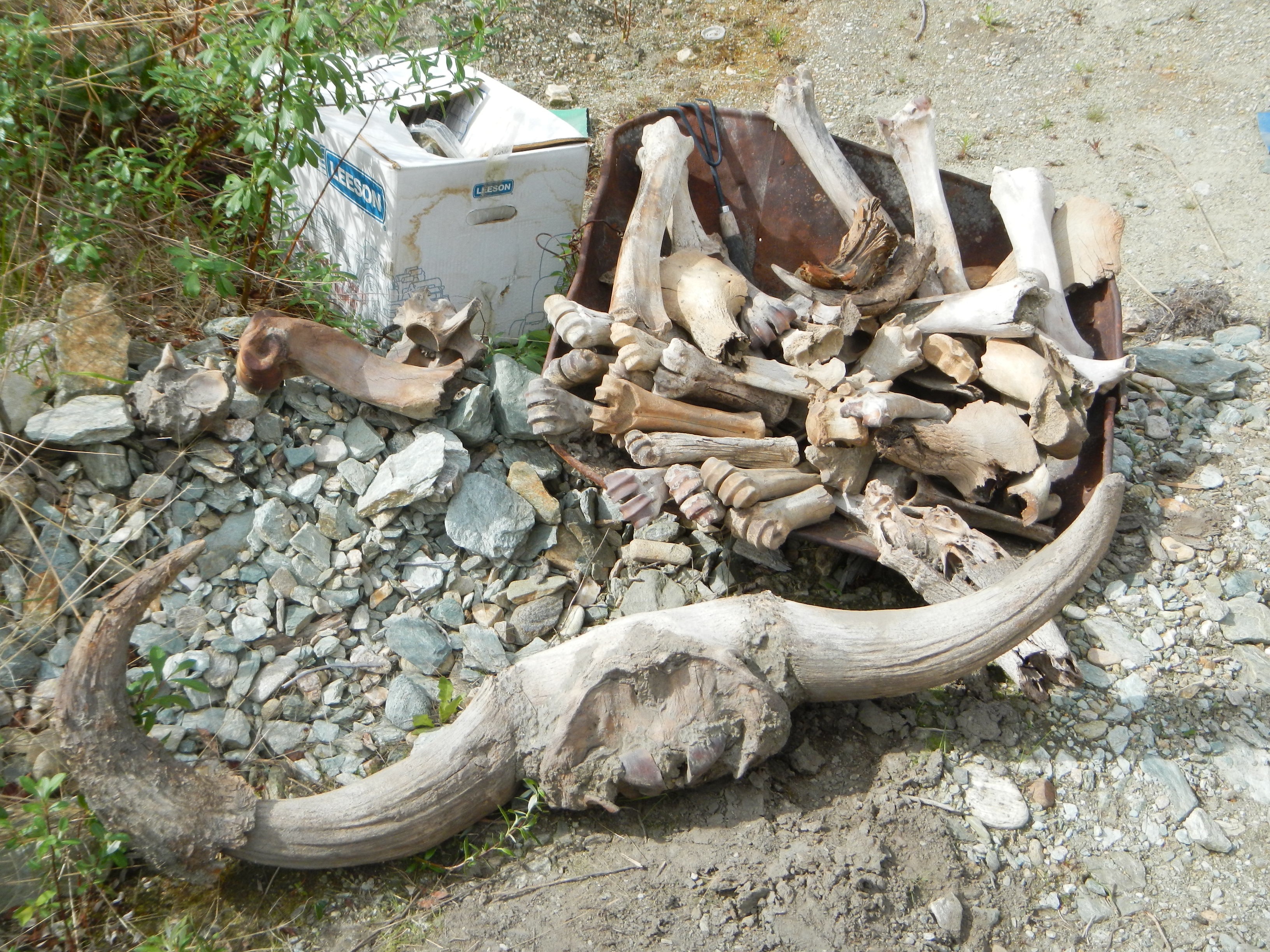Shrub expansion preceded megafauna extinction at the end of the last ice age
Andrew Lyle - 20 December 2021
A new study is helping to solve the mystery of what caused the disappearance of the steppe-tundra, a now-extinct grass-dominated ecosystem that was once the most extensive biome on the planet. The steppe-tundra extended from Yukon through Eurasia during the late Pleistocene and supported a diverse grazing megafauna population dominated by horse, mammoth and bison. In a new study, a team led by University of Alberta scientists found the cause to be a climate-driven expansion of shrubs and woody vegetation, not over-hunting of the large mammals that grazed and maintained it — a finding with implications for efforts to combat climate change in the Arctic today.
“Our findings support the hypothesis that the collapse of the steppe-tundra biome was caused by climate-driven habitat loss, which preceded and contributed to turnover in mammal communities,” said Alistair Monteath, study lead author and postdoctoral fellow in the Department of Earth and Atmospheric Sciences. “
In piecing together a clearer picture of the order of events as the ice age ended, the team made a surprising discovery — that willow and birch shrubs expanded across Alaska and Yukon roughly 14,000 years ago, despite evidence that large grazing animals were still abundant on the steppe-tundra.
The findings are in contrast to existing theories that the steppe-tundra collapsed due to top-down ecosystem cascades, where human hunting of keystone species led to profound changes in vegetation across high latitudes in the Northern Hemisphere. The results are of particular significance for strategies to combat climate change through rewilding to cool soil temperatures and prevent carbon emissions from permafrost.
A mammoth undertaking
“In the last 50 years shrubs have expanded rapidly across the Arctic, which parallels shrub expansion at the end of the ice age,” explained Monteath. “Some studies have proposed the reintroduction of large mammals, such as horse and bison, to combat vegetation expansion — as a form of geoengineering that could help preserve permafrost and prevent carbon emissions.”
To test this idea, the team examined the timing of vegetation change and turnover in mammal communities as the steppe-tundra biome collapsed at the end of the ice age.
“We investigated the role large mammals played in maintaining their ice age environments, seeking to understand the timeline of these ancient changes,” said Monteath, who conducted the research under the supervision of Duane Froese, professor in the Department of Earth and Atmospheric Sciences.
The timeline of these events has been debated for several decades, Monteath explains, in part because of chronological ambiguity in many palaeoenvironmental records. The team focused on well-dated records in order to paint a clearer picture than had been described in the past.
“Given the difficulties associated with radiocarbon dating of high latitude lake-sediments, we were surprised at the clarity of our findings. They showed the order of events quite convincingly and strongly suggest that shrub expansion occurred in response to climate change — not the removal of keystone species and reduction of top-down pressures on vegetation.” explained Monteath. “Therefore the reintroduction of large mammals would not be an effective geoengineering strategy to prevent carbon release.”
While the team’s findings suggest that this route to combating Arctic climate change may not be an effective solution, the increased clarity helps in the ongoing efforts to find solutions.
“It is important to answer these questions as not only do they help us understand how past ecosystems functioned, but they also help us to study processes that are taking place today,” said Monteath. “Shrubs are currently expanding across the Arctic in response to anthropogenic climate change, and it is unclear how mammals will affect this process, or if they will successfully adapt to changes in their environment. The more we know about ancient parallels, the more informed our modern efforts to solving these problems will be.”
The study, “Late Pleistocene shrub expansion preceded megafauna turnover and extinctions in eastern Beringia” was published in Proceedings of the National Academy of Sciences of the United States of America (PNAS).
